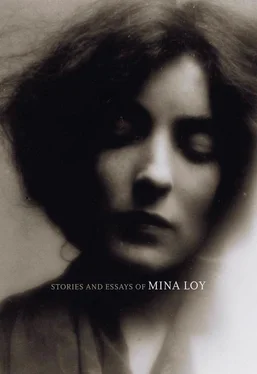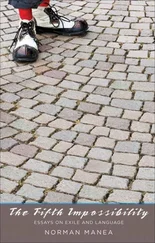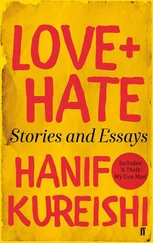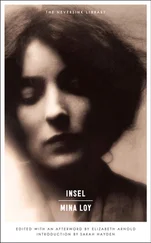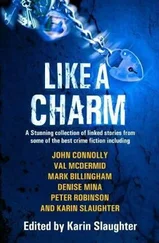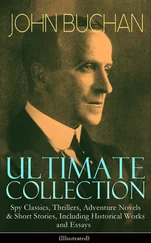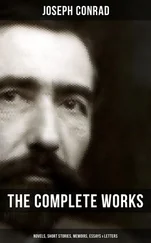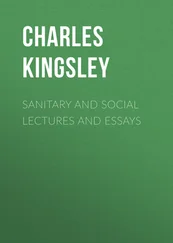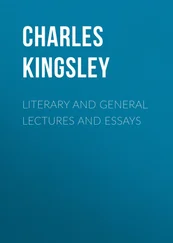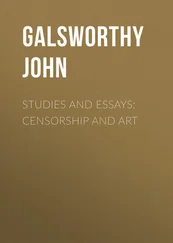Mina Loy - Stories and Essays of Mina Loy
Здесь есть возможность читать онлайн «Mina Loy - Stories and Essays of Mina Loy» весь текст электронной книги совершенно бесплатно (целиком полную версию без сокращений). В некоторых случаях можно слушать аудио, скачать через торрент в формате fb2 и присутствует краткое содержание. Год выпуска: 2011, Издательство: Dalkey Archive Press, Жанр: Современная проза, на английском языке. Описание произведения, (предисловие) а так же отзывы посетителей доступны на портале библиотеки ЛибКат.
- Название:Stories and Essays of Mina Loy
- Автор:
- Издательство:Dalkey Archive Press
- Жанр:
- Год:2011
- ISBN:нет данных
- Рейтинг книги:3 / 5. Голосов: 1
-
Избранное:Добавить в избранное
- Отзывы:
-
Ваша оценка:
- 60
- 1
- 2
- 3
- 4
- 5
Stories and Essays of Mina Loy: краткое содержание, описание и аннотация
Предлагаем к чтению аннотацию, описание, краткое содержание или предисловие (зависит от того, что написал сам автор книги «Stories and Essays of Mina Loy»). Если вы не нашли необходимую информацию о книге — напишите в комментариях, мы постараемся отыскать её.
Stories and Essays of Mina Loy
Stories and Essays of Mina Loy — читать онлайн бесплатно полную книгу (весь текст) целиком
Ниже представлен текст книги, разбитый по страницам. Система сохранения места последней прочитанной страницы, позволяет с удобством читать онлайн бесплатно книгу «Stories and Essays of Mina Loy», без необходимости каждый раз заново искать на чём Вы остановились. Поставьте закладку, и сможете в любой момент перейти на страницу, на которой закончили чтение.
Интервал:
Закладка:
With the snobbishness of those who understanding all things forgive all things — — I endeavoured with the perfect sang-froid of tact to put her at her ease. But a righteous change had come over my story teller, and she hated me now with the just and bitter hatred of women who know each other to be at last but women.
For the rest of the journey she shunned me with the triumphant reproach of a legitimate criminal caught red-handed by the detective of social convention. She flung me for what it was worth, the fictitious chastity of her nocturnal anecdotes, like a superfluous trimming she had considered fitting for my unprofitable companionship.
And so I watched her on the train when she was not looking.
On awakening from the travelling salesman’s embraces she had opened her meagre valise and taken from it a kerchief of shining silk, and had changed to an open-necked bodice of soft stuff.
Reanimated by the man’s cajoling evocations of her consumed adolescence for his convenience, from under the copper gleam of the kerchief which she had draped about her head, her mummied face reappeared in an indescribable richness of transformation. Her shrapnel eyes had softened to a velvet tranquillity and from the battered pores of her skin a warm disclosing radiance flowed.
She sat pondering; glowing and blossoming with that essential virginity of the spirit which women reconquer only in the arms of those illusions they call their lovers.
Regally as a Madonna she breathed the incense of their initial innocence of Nature’s salute. And the unfading pollen of love, broadcast on the universe, dusted her reviving flesh as she sidled, something wild that had been tamed, against her huckster of a night.
She kept so close to him as if she had found her home after bewildering wanderings. With the gesture of possession and the abandonment of rebirth she nestled in the shadow of the fat man of commerce who was shrugging away from her in his disgusted relief.
That which had been her transfiguration seemed to have coated her consciousness with a final filth. His ugly eyes polluted her with occasional lewd and downward looks of dismissal while he argued cost prices with a man seated on his other side.
By what glaring ethical impropriety had a fly-by-night amour with a stranger in a draughty railway inn invested this woman with such chastened and spiritual a dignity?
I was fired with the preposterous fantasy that if woman has been the pack mule for the transgressions of man it is because by some alchemy of her actions, she is within herself incapable of sin. She undeniably behaves in all contingencies as if assured of a transcendental sanction.
DRAMA
CRYSTAL PANTOMIME
Everything is a black background — in front a beautiful slim maiden dances — all very white — tentatively towards a witch — all very hazy smoke grey — who teeter away from and towards each other — the witch enticingly — the maiden doubtfully — the witch holds in her hand a crystal globe.
High above them a tiny beam of light, supposed to be reflected from the moving crystal, plays fitfully on the black background — as the dancing beam on a ceiling cast from a diamond or mirror reflecting the sun. And attracted to this dancing beam a “creature,” a homunculus with propeller-like wings — as much like a blue bottle or a striped wasp as possible — bumps toward and away from the spot of light. This homunculus must be artificial, his wings whirring just like a fly’s, and the motion of quadrille imitating the to-and-fro darting of a summer morning housefly — which is one of the finest rhythms observable.
The dance of the maiden and the witch ends by the maiden deciding to gaze into the crystal.
The crystal begins to grow larger and larger (the homunculus disappears) until the round spotlight which has taken the place of the crystal becomes the whole scene.
The scene is circular instead of square — and represents the interior of a crystal globe with its curved planes and depths.
The maiden is now to see her life in the crystal and it is the story of the maiden’s future which is to be portrayed by the ballet. Only, as this maiden lived in the times when maidens waited at home while the youths went out into the world, it is rather the adventures of the young man that she will eventually marry — leading up to this, her future marriage, that the maiden will see in the crystal.
Her only appearances will be her meetings with him and her waiting — and at last her union with him.

The first scene is the village green — where little girls are dancing skipping rope and little boys are playing marbles while mixed groups play shuttlecock and battledore. The whole of the ballet takes place in a transparent crystal world — and the personages partake of this crystalline appearance, particularly their clothes and their hair. This gives an impression of ethereal beauty that cannot be equalled — and the ballet takes the spectators into an evanescent dream world so irreal and tenuous that it will take their breath away. The crystal shuttlecocks of bright colors are enormously big and the curves of the glittering skipping ropes are a great addition to the attitudes of the dance.
The shuttlecocks afford color motion up in the air — and the equally enormous glass marbles of the playing boys, a balance on the ground. The dance of the skipping ropes will be simultaneous to a leapfrog dance of the boys — the circular motion of the skipping ropes and the swift horizontal movements of the boys — who seem to fly across the stage when leapfrogging — as Nijinsky did in The Spirit of the Rose , giving an interesting modern rhythm. The subject of the ballet will appeal to everyone because, being so simple, the high-brows will enjoy it with that humorous compassion they afford for the souvenir sentiments and the general public will “get” it without effort. It is rich in possibilities as all simple eternal subjects are.
The maiden appears in this scene for she is the principal little girl with yellow glassy plaits tied with a blue ribbon. The little girls and the little boys mock one another in their play. But the principal little boy takes a shy notice of the little girl. He snatches her blue glass hair ribbon and offers the little girl his marble. The little girl scoffs at his attentions and, chucking the marble into the hollow of a nearby tree, dances off jeeringly while all the children dance and disperse. That is the end of the childhood recollection. The little boy looks at the blue ribbon he is holding and stuffs it into his pocket.
The scenes change while the crystal becomes cloudy. The nearer scenery is constructed of a transparent material like glass and the distant scenery is thrown onto the crystal planes by a kind of magic lantern — from the back if possible in order not to reflect on the dancers. The magic lantern scenery enhances the ethereal effect of unreal beauty.

The second scene is adolescence meeting at a country fair. One or two booths with fancy trifles which lend themselves particularly to bright glass colors — very much exaggerated in size — and diminished in number to give a decided decorating effect of composition — a little of the ridiculous that lends so much charm to ancient art and the sufficiency of a symbol to express a more complex actuality. There is at this fair an arbour of green glass trellis and climbing plant and in this arbour is a round table at which can be partaken of enormous glasses of vivid colored syrup.
The maiden visits the country fair chaperoned by her mother and grandmother. The grandmother is bent over a cane and dances with faltering steps. She wears a dolman cloak and ballet-dancer’s legs. The mother wears a pork pie hat tipped over her nose, carries a lorgnette and her ballet skirt is a draped bustle with a tail of bunched drapery such as hung down the back of bustle skirts — but the skirt is absent — the movements of her dance give the poker-swan-like effect of the period — only her slim legs are also in tights — there is no skirt — with her hanging draperies she gives the effect of a gracefully slim-legged bird with its tail dragging.
Читать дальшеИнтервал:
Закладка:
Похожие книги на «Stories and Essays of Mina Loy»
Представляем Вашему вниманию похожие книги на «Stories and Essays of Mina Loy» списком для выбора. Мы отобрали схожую по названию и смыслу литературу в надежде предоставить читателям больше вариантов отыскать новые, интересные, ещё непрочитанные произведения.
Обсуждение, отзывы о книге «Stories and Essays of Mina Loy» и просто собственные мнения читателей. Оставьте ваши комментарии, напишите, что Вы думаете о произведении, его смысле или главных героях. Укажите что конкретно понравилось, а что нет, и почему Вы так считаете.
